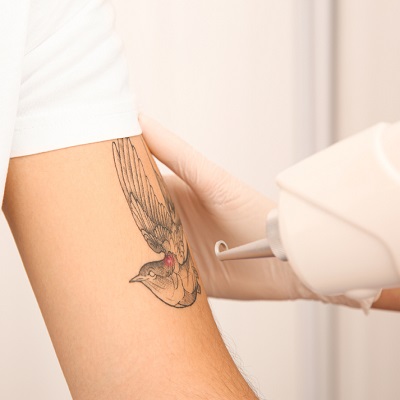Introduction
Tattoos are often seen as a permanent form of self-expression. However, as life changes, so can the desire to alter or remove these inked reminders of the past. Two popular methods for addressing unwanted tattoos are laser tattoo removal and tattoo lightening. While they may seem similar at first glance, these techniques serve different purposes and involve distinct processes. This article delves into the key differences between Laser Tattoo Removal in Muscat and tattoo lightening, exploring their methods, effectiveness, and considerations for those seeking change.
Understanding Tattoo Removal and Lightening
Before diving into the specifics, it is essential to understand what tattoo removal and tattoo lightening entail.
Tattoo Removal
Tattoo removal refers to the process of completely eliminating a tattoo from the skin. This procedure is often sought by individuals who no longer wish to have a particular tattoo for personal, professional, or emotional reasons. The most common method for tattoo removal is laser therapy, which uses concentrated beams of light to break down the ink particles embedded in the skin.
Tattoo Lightening
Tattoo lightening, on the other hand, is a technique aimed at fading a tattoo rather than removing it entirely. This process is typically used when a person wants to cover up an existing tattoo with a new design. By lightening the original tattoo, the new ink can be applied more effectively, allowing for better coverage and integration with the surrounding skin.
The Processes Involved
Laser Tattoo Removal Process
- Consultation: The process begins with a consultation with a licensed professional. This session often involves discussing the tattoo’s size, color, age, and location, as well as any medical history relevant to the procedure.
- Preparation: The skin is prepared for the procedure, which may involve cleaning the area and applying a topical anesthetic to minimize discomfort.
- Laser Treatment: During the treatment, a laser device emits high-intensity light that targets the ink particles in the tattoo. The energy from the laser breaks down the ink into smaller particles, which are then gradually absorbed and eliminated by the body’s immune system.
- Aftercare: Post-treatment care is crucial and may involve keeping the area clean, avoiding sun exposure, and applying specific ointments to promote healing.
Tattoo Lightening Process
- Consultation: Similar to laser removal, the lightening process begins with a consultation to assess the tattoo and discuss the desired outcome.
- Lightening Techniques: Various techniques can be employed for tattoo lightening, including:
- Laser Lightening: A less intense laser treatment that targets the ink to lighten it without complete removal.
- Chemical Lightening: This involves applying specific chemicals to the tattoo to fade the colors. This method can be less effective and is often less preferred due to potential skin irritation.
- Tattoo Ink Removal Creams: These over-the-counter products claim to lighten tattoos but are often less effective and can cause skin damage.
- Follow-up Sessions: Multiple sessions may be required for desired lightening, and the process is typically less invasive than complete removal.
Effectiveness and Considerations
Effectiveness
- Laser Tattoo Removal: Laser removal is highly effective for a wide range of tattoo colors and types. However, complete removal can require multiple sessions and is influenced by factors such as skin type, ink colors, and the tattoo's age. Black and dark blue inks are generally the easiest to remove, while colors like green and yellow may be more challenging.
- Tattoo Lightening: Lightening can significantly fade a tattoo, making it more suitable for a cover-up. However, the effectiveness varies widely based on the technique used and the tattoo's characteristics. While some lightening methods can yield satisfactory results, they may not produce the same level of fading as laser treatments.
Pain and Recovery
- Laser Tattoo Removal: The process can be painful, often described as similar to a rubber band snapping against the skin. However, the use of topical anesthetics can help manage discomfort. Recovery involves swelling, redness, and scabbing, which can last several days.
- Tattoo Lightening: Generally less painful than complete removal, lightening methods like chemical treatments may cause skin irritation or allergic reactions. Recovery time is typically shorter, with less visible aftercare required.
Cost Considerations
Cost is an important factor when considering tattoo removal or lightening.
- Laser Tattoo Removal: This process can be costly, with sessions ranging from $200 to $500 or more, depending on the tattoo's size and complexity. Multiple sessions are usually necessary, leading to a cumulative expense.
- Tattoo Lightening: Lightening methods are often less expensive than complete removal. However, if laser lightening is chosen, the costs can be comparable to removal sessions. Over-the-counter creams or chemical treatments may offer a more affordable, albeit less effective, option.
Conclusion
In summary, while both laser tattoo removal and tattoo lightening serve the purpose of addressing unwanted ink, they differ significantly in their methods, effectiveness, and overall goals. Laser tattoo removal is a more comprehensive approach aimed at complete eradication, whereas tattoo lightening focuses on fading tattoos to facilitate cover-ups. Individuals considering either option should consult with a qualified professional to determine the best method for their needs, taking into account factors such as pain tolerance, budget, and desired outcomes. Understanding the differences between these procedures is crucial for making an informed decision and achieving the best results in tattoo modification or removal.





Comments